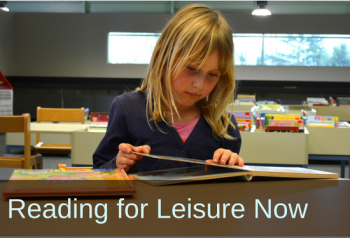Rhythmic Movement Makes a Significant Impact on 7-Year-Old Girl with ADHD
Submitted by C.S., Occupational Therapist

|
Before
|
After
|
|
Difficulties and frustration surrounding reading
|
Reading more frequently at home, and sometimes even for leisure
|
|
Unable to follow any tracking from left to right or right to left in the visual field without extremely jagged tracking; demonstrating a nystagmus at 1/4, 1/2, and 3/4 of the L to R and R to L range in tracking horizontally
|
Able to track in the L to R and R to L pattern with minimal jagged tracking noted -- 30-40% of the time in midline
|
|
Axiety about speaking in front of class; would stutter and was very shy about it
|
More confident about this task
|
|
Difficulties staying on task and retaining information
|
Improved ability to attend to task and retain information after OT and speech sessions
|
Emma (name changed for privacy) is a 7 y.o. girl diagnosed with ADHD and “other health impairments." Emma demonstrates difficulty with many functional tasks presented in her daily life.
"Upon seeing Emma for the first time in February, she was unable to follow any tracking from left to right or right to left in the visual field without extremely jagged tracking. While Emma seemingly demonstrated adequate motor movements for her age, she also demonstrated maximal difficulty crossing midline during activities."
Upon meeting and evaluating Emma, I tested for primitive reflexes and among many, she had an unintegrated ATNR, STNR, and TLR. Prior to initiating reflex integration isometrics, I introduced rhythmic movement [from the Brain and Sensory Foundations course]. Emma was able to tolerate 18-20 minutes of rhythmic movement in the clinic (and was frequently asking for more) prior to starting the ATNR, STNR, and TLR exercises. With the rhythmic movements and use of the PACE program [brain tune-up], I was able to truly see Emma’s abilities. Emma’s parents had asked if I would like her to have her ADHD medicine prior to coming to therapy to which I asked them to hold all medicines possible.
"Since Emma has not been taking her medicine and been working with rhythmic movements and the PACE program [Brain Tune-up], both her speech therapist and I have seen a huge difference in her ability to attend to task, and retain information after the OT sessions (in the speech/language sessions)."
After I knew Emma could tolerate rhythmic movements, I began reflex integration activities. With these reflex integration activities, I also introduced the 5 step repatterning sequence [from the Brain and Sensory Foundations course] with the ATNR and STNR integration. I introduced this because Emma had big fears surrounding the academic task of reading as this has been extremely difficult and frustrating for her. I decided to introduce this with Emma as I knew her body had innately changed with the rhythm and fun activities that were helping to integrate her reflexes and I wanted Emma to be able to enjoy the task that for so long she had feared doing.
"In her 5-step repatterning sequence, Emma imagined and acted out reading in front of her class, an activity that taunted her for the last few years. In the initial portion of the task, Emma was stuttering and was very shy. After the repatterning sequence, she was smiling and confident in her acting out of the task."
After I worked Emma up to tolerating the rhythmic movements (and via a home program), I was able to initiate the isometric activities. After about 6 weeks of using the ATNR, STNR, and TLR isometric activities, Emma has demonstrated the ability to track in the L to R and R to L pattern with minimal jagged tracking noted ~30-40% of the time in midline which was a huge improvement from demonstrating a nystagmus at 1/4, 1/2, and 3/4 of the L to R and R to L range in tracking horizontally.
While we will continue to work on integrating the other reflexes, I will begin working on higher level tasks with Emma to see how her brain has changed over the last 12 weeks.
"Emma still demonstrates slight issues with tracking, although her parents state she is reading more frequently at home and sometimes even for leisure."
As a result of working with Emma, I realized that play is so incredibly important. Emma began with the balloon crawling game for reflex integration and couldn’t manage to lift one hand from her quadruped position. However, because this was a fun way for Emma to work, she requested this game every time she came to the clinic.
"Emma has progressed to being able to control the taps with the contra-lateral head turn and enjoys being able to control the game more. I also learned how important rhythm really is for the brain."
While Emma can’t hold a beat with rhythmic movements for herself, she was more resistive to movements when I first began seeing her. Emma is now able to incorporate a head nod with RM 1 and can complete RM 3 for 7 beats without assistance. I believe the rhythmic movements have allowed her brain to innately change itself without being forced—this is why it is so important to watch the client to see what they can tolerate and what they can’t. (emphasis added)


